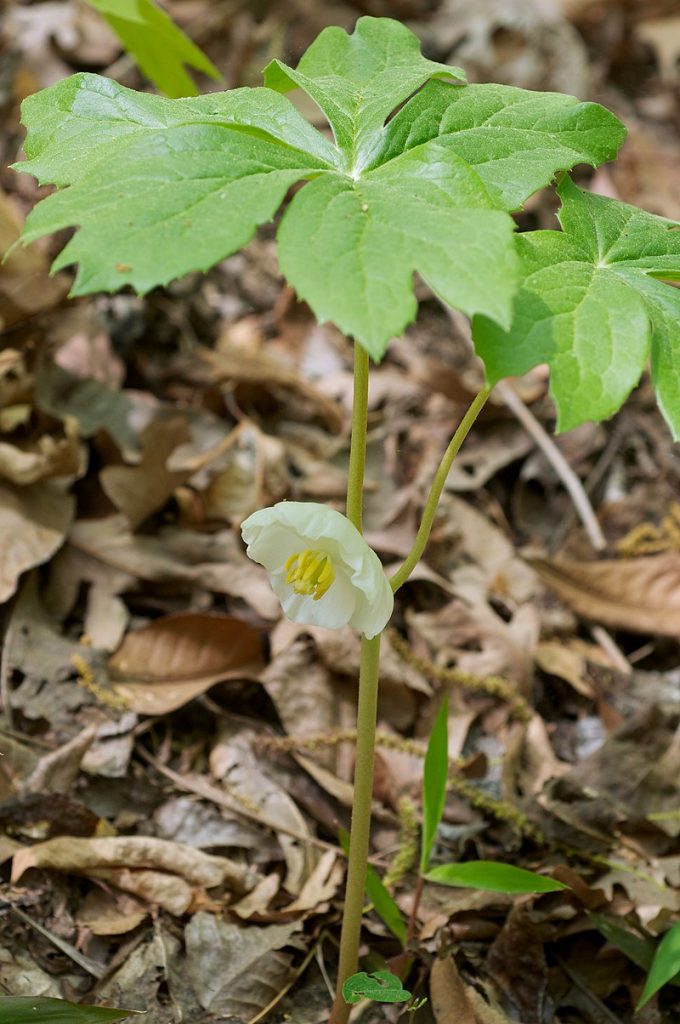
Known by many names including duck’s foot, hog apple, raccoonberry, umbrella leaf, and wild lemon, this herbaceous perennial is native to eastern North America south to Texas, where it may form dense colonies in open deciduous forests and shady fields, and along riverbanks and roadsides. It is a member of the barberry family, Berberidaceae, that also includes heavenly bamboo, Oregon grape, and Epimedium. The plant grows 12-18″ tall and has two large, long-stalked leaves that are 6-8″ long and emerge like folded umbrellas in early spring. The leaves are deeply divided into 5-7 coarsely toothed lobes and open to reveal a single, nodding white or rose colored flower hidden in their axil. The flower is 1-3″ across and has 6 to 9 waxy petals and 12 to 18 stamens with bright yellow anthers. It is followed by a large pale yellow berry that is the size of a small lemon that is toxic when young but edible when ripe. Plants may go dormant in summer but will return the following year. The common name refers to the bloom period, but it is the flower, not the fruit that appears in May. The genus name, Podophyllum, comes from the Greek words πούς (poús) meaning a foot and φύλλον (phúllon) meaning a leaf , referring to the shape of the leaf. The specific name, peltatum, refers to the ancient Roman shield carried by infantry men, and describes the shape of the leaves.
Type: Herbaceous perennial
Bloom: A single white or rose-colored flower 2” across is borne in the axil of the leaves in May.
Foliage: Each plant produces two dark green large leaves up to 12” across that slowly open as the stem elongates.
Size: 12-18” H x 24-36” W
Light: Shade to part shade
Soil: Humus-rich, moist to average, slightly acidic
Hardiness: Zones 3-9
Pests and Diseases: None of significance; slugs may damage leaves
Propagation: Root division in fall; seed (sow immediately or provide cold moist stratification)
Companion plants: Virgina bluebells (Mertensia virginica), spring beauty (Claytonia virginica), Solomon’s seal (Polygonatum biflorum), wild ginger (Asarum canadense), and ferns.
Ohoto Credit Eric Hunt Wikimedia Commons

It’s a beautiful bloom…how large does it (the flower) get?